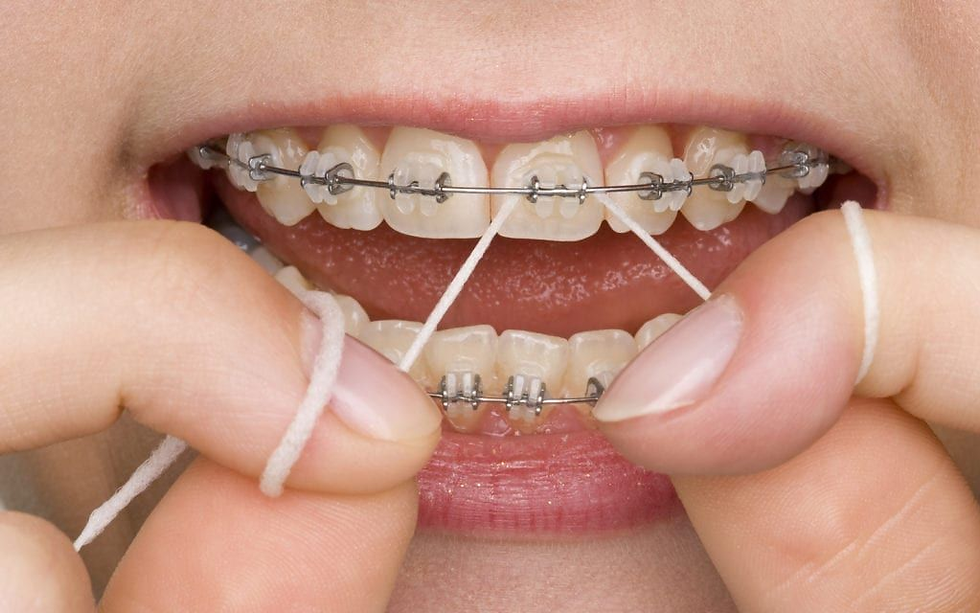Eating with Braces
- Contact Center
- Aug 27
- 2 min read

When you first get your braces, your teeth and mouth will feel tender for a few days. During this time, stick to soft foods and avoid anything tough, chewy, or crunchy. As you adjust, you’ll be able to eat most foods again—but some foods should always be avoided to protect your braces.
Foods to Avoid

Ice (even if you think you’re careful)
Hard candies (e.g., Jolly Ranchers, Snickers, etc.)
Gum of any kind
Hard chips (like Doritos)
Carrots, apples, pears—unless cut into small pieces
Popcorn kernels (especially from the bottom of the bag)
Meat on the bone—cut meat off before eating
Corn on the cob—cut kernels off before eating
Tough breads (pizza crust, bagels, French bread)—break into bite-sized pieces
Non-food items (pens, pencils, fingernails)
Braces-Friendly Foods

Baked chips
Baked fish or fish sticks
Mashed or baked potatoes
Burritos
Soft cakes, pies, or donuts
Cheese (all kinds, including puffs or balls)
Chicken (boneless or tender pieces)
Tender steak or ribs (cut small)
Soft fruits like pears
French fries
General Soreness
Mild soreness or pressure is normal for 3–5 days after braces are placed or adjusted. Rinsing with cold water may help. Over-the-counter pain relievers may also provide relief. Lips, cheeks, and tongue may feel irritated for a week or two; orthodontic wax can help. We will show you how to use it.
Loosening of Teeth
It’s normal for teeth to feel loose during treatment. This means they are moving into the correct position. Once aligned, they will become stable again.
Athletics & Sports

If you play sports, please let us know. A protective mouthguard is strongly recommended for contact sports. In case of a facial injury, check your mouth and braces immediately and call our office to schedule an exam.
Oral Hygiene with Braces
Brushing and flossing are more important than ever during orthodontic treatment. Keeping your teeth and gums clean helps prevent decay, gum disease, and staining.
Brushing
Brush all three tooth surfaces: outer, inner, and chewing surfaces.
Hold your toothbrush at a 45° angle to the gumline.
Brush three teeth at a time, ensuring each is free of food and plaque before moving on.
Pay special attention to the area between the braces and gumline.
Flossing

Flossing with braces takes practice but is essential. Two options:
Superfloss (pre-threaded orthodontic floss)
Regular floss with a floss threader
Steps:
Guide floss under the archwire.
Wrap floss around one tooth and gently move up and down from gumline to wire, repeating several times.
Repeat on the neighboring tooth.
Continue across the entire arch.
Emergencies
If you experience:
A broken bracket
Loose or poking wire
Irritation that does not improve with wax
Please call our office right away. We’ll make every effort to address the issue quickly and keep you comfortable.
Call us at: 323-325-5641




Comments